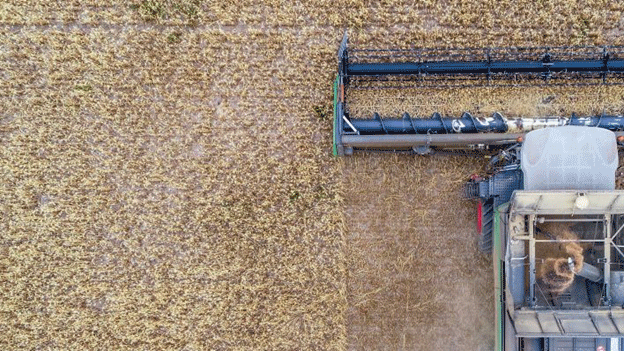In Brandenburg, Germany, the area dedicated to grain cultivation has seen a notable decrease in 2024 compared to the previous year. According to the latest report from the Berlin-Brandenburg Statistics Office, the total grain cultivation area has contracted by approximately 13,600 hectares to a total of 471,300 hectares. This reduction means that nearly half (48%) of the state’s arable land is now used for grain production. Wheat and rye remain the dominant grains, with 149,000 and 131,900 hectares respectively. However, both crops have experienced a decline in area compared to 2023, with wheat decreasing by 7% and rye by 9%. Notably, this represents the lowest level of rye cultivation in Brandenburg since 1991.
Current Trends in Brandenburg’s Grain Production
- Decline in Wheat and Rye Cultivation:
- Wheat: The area devoted to wheat has decreased by 7% compared to the previous year. This decline is partly attributed to shifting agricultural priorities and market conditions.
- Rye: Rye cultivation has decreased by 9%, marking the lowest level since 1991. The reduced emphasis on rye reflects changes in consumer preferences and market demand.
- Increase in Barley and Stability in Potato Production:
- Barley: The area for barley cultivation has risen by 2% to 111,000 hectares. Barley is increasingly being chosen for its suitability as animal feed.
- Potatoes: The potato cultivation area remains stable at 10,700 hectares. This stability is attributed to favorable conditions in Brandenburg compared to other major growing regions like Lower Saxony, where excessive spring moisture hindered harvesting.
- Shift in Crop Preferences:
- Corn: Corn remains the most widely cultivated crop in Brandenburg, with 195,000 hectares dedicated to its production. This shift reflects a growing focus on crops suited for animal feed and resilience in drier conditions.
Influences Behind the Changes
- EU Agricultural Policy:
- The EU’s agricultural policies are promoting greater crop diversity. The shift in policy encourages the cultivation of legumes, such as peas, which has seen an increase in area to 31,700 hectares, approaching levels seen in 2006.
- Impact of Recent Dry Years:
- The recent trend towards maize and other crops can be attributed to the need for reliable animal feed in response to drought conditions in previous years. This focus on maize reflects a strategic adaptation to maintain livestock nutrition and farm viability.
- Market Dynamics and Global Events:
- The ongoing conflict in Ukraine initially disrupted international wheat markets, leading to a brief surge in prices and expectations among Brandenburg farmers. However, the market has since stabilized, leading to a shift back towards other crops like barley.
The reduction in grain cultivation area in Brandenburg highlights a significant shift in agricultural practices influenced by policy changes, market dynamics, and climatic conditions. The decrease in wheat and rye production, combined with the increase in barley and stable potato cultivation, reflects broader trends in crop diversification and strategic adaptation by farmers. As Brandenburg adjusts to these new conditions, it is crucial for farmers and agronomists to stay informed about evolving market demands and policy incentives to optimize crop selection and ensure sustainable production practices.
Error




